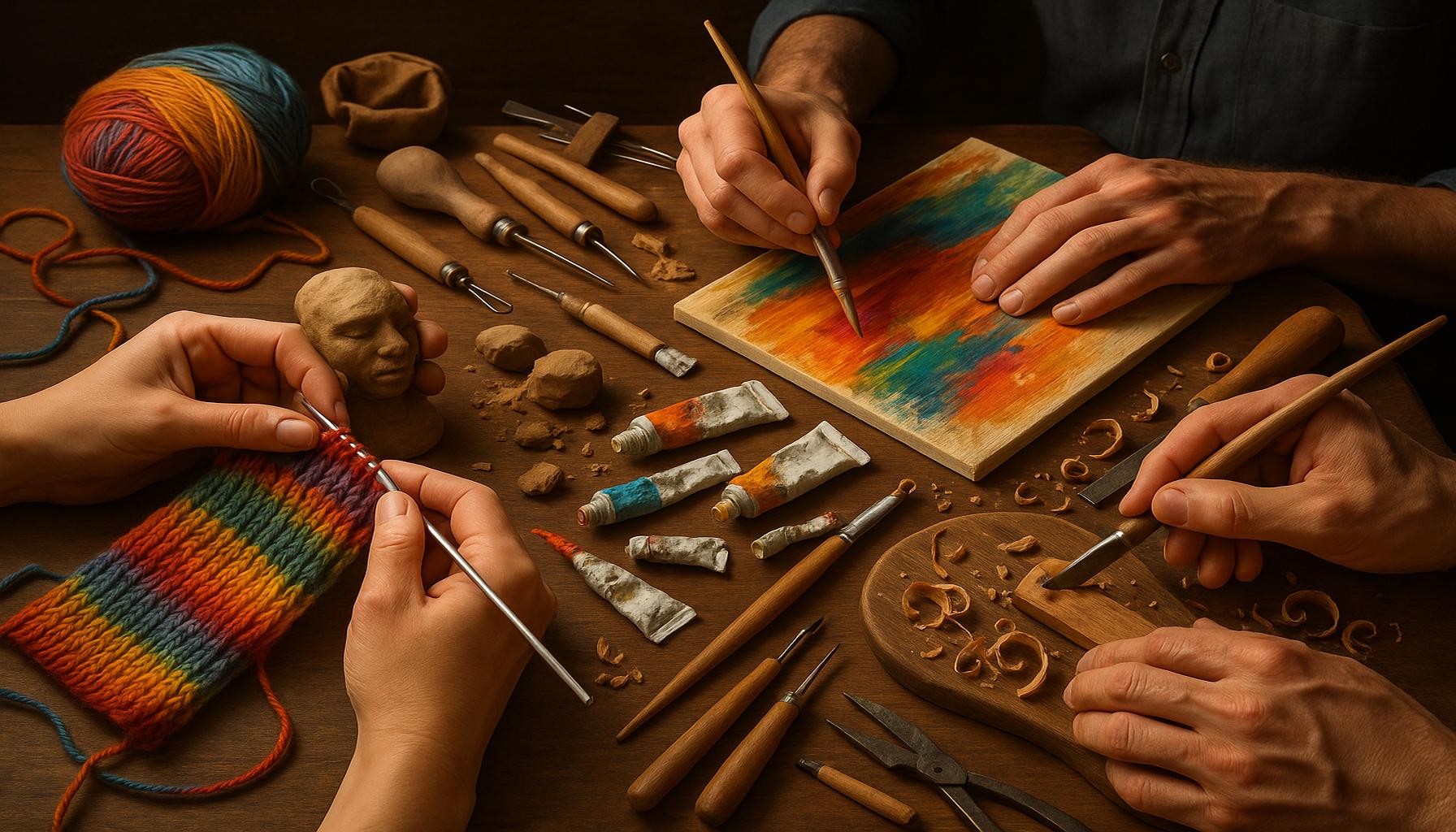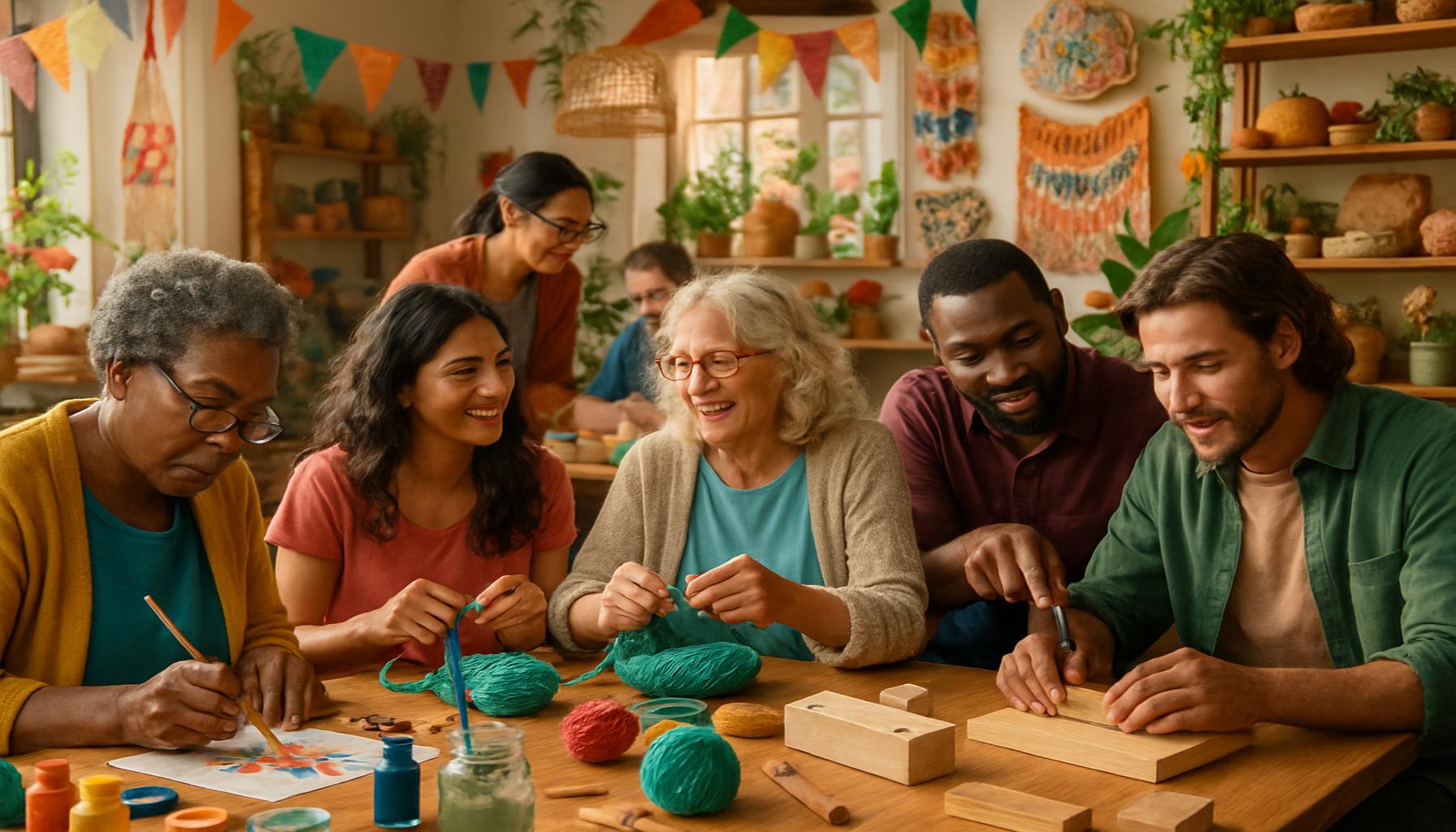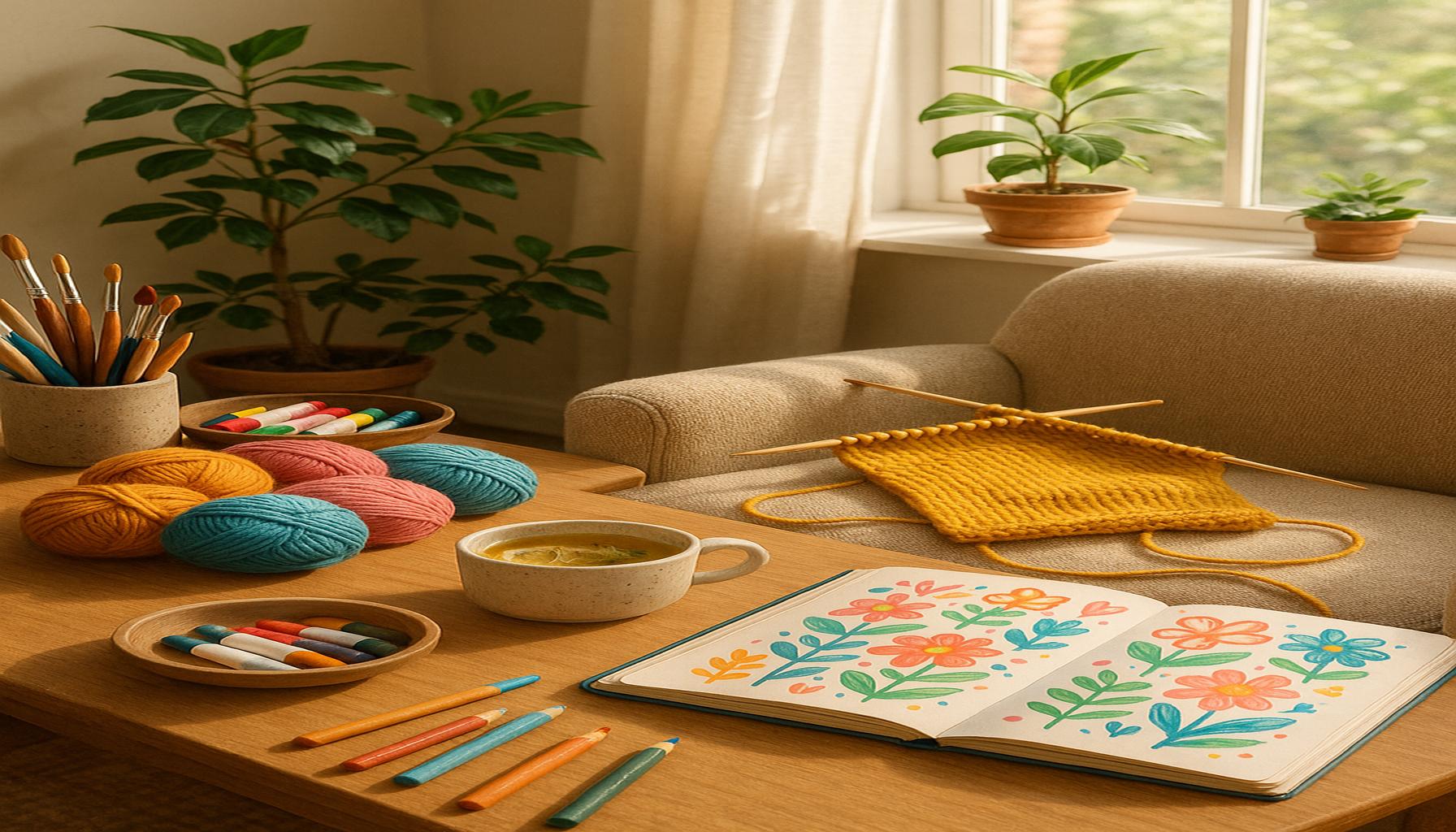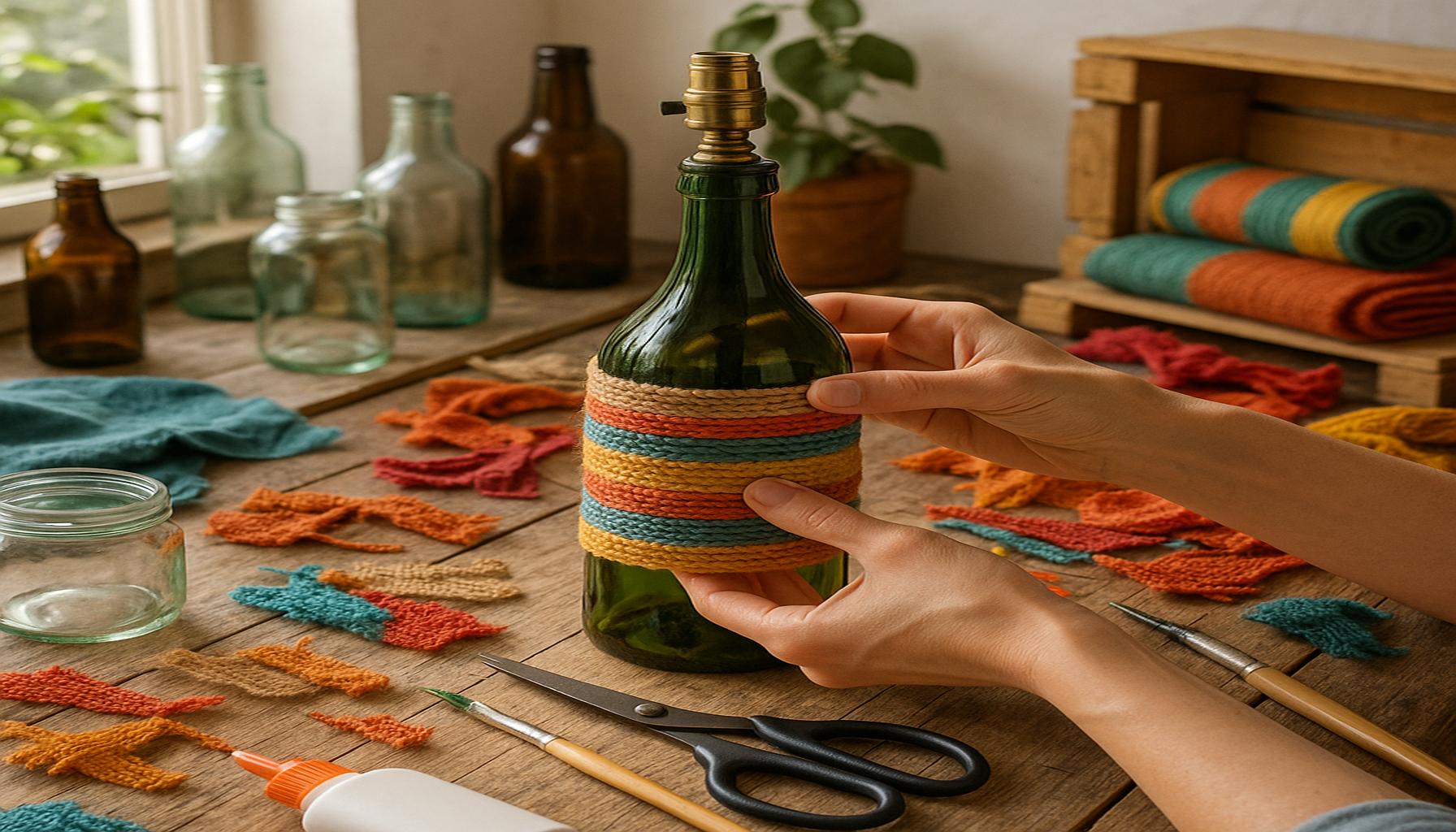The Evolution of Crafting: How Manual Hobbies are Shaping Modern Creativity

Exploring the Shift in Creative Expression
In recent years, the world of crafting has undergone a remarkable transformation. What once started as a simple pastime has blossomed into a vibrant movement that intertwines traditional skills with modern creativity. This phenomenon is not only reviving age-old techniques but also igniting a wave of innovation across various platforms, leading to an unprecedented shift in how individuals express their creativity.
Today, manual hobbies have evolved, influencing numerous aspects of our lives, including:
- Artistic Innovation: Original craft ideas create a new genre of art. For instance, artists are blending traditional pottery with digital design, producing sculptural pieces that incorporate LED lighting to enhance their visual appeal. Projects such as abstract wall hangings using macramé are captivating art enthusiasts and transforming home décor.
- Community Building: Makerspaces and online forums foster collaboration. These community-based workshops not only provide tools and resources but also act as incubators for creative ideas. For example, local libraries in the United States have started offering maker programs where individuals can learn everything from sewing to robotics, thus nurturing skills and friendships alike.
- Economic Impact: Booming indie markets support local artisans. Events like craft fairs, farmers’ markets, and online platforms such as Etsy have seen a surge in indie sellers, promoting handmade goods. Reports indicate that the global handmade crafts market is projected to reach $984 billion by 2024, highlighting a significant trend towards valuing unique, handcrafted items over mass-produced alternatives.
As individuals delve into their creative sides, the resurgence of crafting has sparked interest in diverse materials and techniques. From knitting intricate patterns and woodworking bespoke furniture to exploring DIY electronics and coding robotics, hobbies are shaping how we define creativity in the modern era. Such activities not only allow for personal expression but also create a sense of accomplishment as individuals master their skills.
Moreover, the role of technology cannot be ignored. Tools like 3D printers and specialized software have redefined what it means to create. For example, artists can design intricate jewelry prototypes on computers, which can then be printed in various materials, allowing for reuse of designs and minimal waste. Crafting has transcended boundaries, becoming a powerful medium for self-expression and storytelling.
As we explore this evolution, it’s essential to recognize that these manual hobbies are not just diversions; they are pivotal in shaping a new creative landscape. They encourage individuals to experiment, share, and connect with others who have similar passions. Through this vibrant crafting movement, a community centered around the values of creativity, sustainability, and individuality is emerging, enriching lives and inspiring a new generation of makers.

DISCOVER MORE: Click here to uncover the beauty of outdoor artistry
Crafting Techniques: Bridging Tradition and Innovation
The landscape of crafting has not only expanded in popularity but also diversified in function and expression. Traditional techniques such as woodworking, quilting, and pottery are now being reimagined through the lens of modern technology and contemporary aesthetics. This exciting fusion invites crafters of all skill levels to explore, experiment, and, above all, innovate.
One of the most fascinating developments in the crafting world is the revival of traditional crafts. For instance, textile arts have experienced a renaissance, as many artisans are revisiting age-old methods to create products that resonate with today’s sustainability ethos. Weaving, once relegated to the realms of heritage crafts, is now being embraced by a new generation eager to produce eco-conscious fashion and accessories. Sustainable yarns and organic fabrics have become staples in many crafters’ toolkits, aligning with the growing awareness of ethical consumption.
In addition to textiles, ceramics have also evolved dramatically. Contemporary potters are embracing not only the tactile nature of clay but also modern glazing techniques and artistic forms. This melding of craft and art has led to unique handmade pottery that serves both aesthetic and functional purposes. Crafters are increasingly blending various materials—combining clay with resin, wood, and metal—to create hybrid pieces that appeal to an artistic audience.
Moreover, as crafting becomes more accessible thanks to online resources, the importance of digital literacy in the crafting community rises. With countless tutorials available, individuals can delve into complex projects from the comfort of their homes. This trend is particularly evident in the popularity of online platforms like YouTube and Instagram where users showcase their handmade creations. Crafting has become a visual spectacle, inspiring others to share their skills and embark on their own creative journeys.
As the crafting community grows, so too does the array of tools available to hobbyists. The advent of 3D printing technology stands out as a significant influence, enabling crafters to design and produce intricate components that complement their projects. For example:
- Jewelry makers can design one-of-a-kind pieces that incorporate custom shapes and sizes, allowing for unparalleled personalization.
- Woodworkers have began integrating 3D-printed elements into traditional wooden designs, creating functional and ornamental objects that blend the best of both worlds.
- Fashion designers are utilizing 3D printing to experiment with avant-garde accessories, pushing the boundaries of wearable art.
This interplay between manual skills and digital tools not only enhances the creative process but also encourages collaboration across disciplines. Crafting is no longer just about individuals working alone; it has transformed into a collaborative effort that merges diverse talents, resulting in enriched creative outcomes. The evolution of crafting is fundamentally reshaping how we think about creativity today, making it a significant contributor to the modern artistic landscape in the United States and beyond.
The Benefits of Manual Hobbies in Modern Creativity
As we delve deeper into the intricacies of crafting, it’s essential to explore the myriad benefits that manual hobbies provide in shaping modern creativity. These activities are more than just pastimes; they serve as powerful tools that stimulate cognitive function, encourage emotional well-being, and enhance social connections.Firstly, engaging in manual hobbies such as knitting, woodworking, or pottery fosters enhanced cognitive abilities. The process of creating something by hand involves critical thinking, problem-solving, and spatial awareness. As crafters navigate challenges like figuring out patterns or constructing projects, they exercise their brain’s neural pathways, leading to improved mental agility.Moreover, manual hobbies are notably beneficial for emotional wellness. Crafting can be a therapeutic process, allowing individuals to express their emotions and alleviate stress. The rhythmic motions involved in activities like painting or sewing can induce a meditative state, helping crafters achieve mindfulness and clarity.Socially, the resurgence of crafting communities is noteworthy. As more people turn to manual hobbies, they often seek out like-minded individuals through workshops, online forums, and local clubs. This networking not only fosters new friendships but also encourages the exchange of ideas and skills, enriching the crafting experience.These dimensions of manual hobbies highlight their significance in the modern world. As people navigate the fast-paced digital landscape, the allure of creating something tangible connects them back to their innate creativity, grounding ambition with practicality. It’s no wonder that the evolution of crafting continues to inspire generations to explore their hands and minds to cultivate unique expressions of art.
| Category | Benefits |
|---|---|
| Cognitive Engagement | Stimulates critical thinking and problem-solving skills. |
| Emotional Therapy | Promotes mindfulness and stress relief through focused creativity. |
| Social Connections | Encourages community building and exchange of ideas among crafters. |
As we examine the impact of manual hobbies on modern creativity, it is clear that they serve as a bridge between the past and the present, reminding us of the importance of hands-on experience in a digital age.
LEARN MORE: Click here to discover tips for creating your own sustainable garden
The Rise of DIY Culture: Empowering Individual Expression
The surge in crafting’s popularity coincides with the rise of the DIY (Do It Yourself) culture, which champions individual creativity and innovation. In the United States, this movement is more than just a trend; it has become a lifestyle choice that empowers crafters to abandon consumerism in favor of personal expression. Influenced by the ethos of upcycling and personal sustainability, DIY engages communities through workshops, local craft fairs, and online platforms, promoting an ethos that values handmade over mass-produced.
At the forefront of this movement is a growing community of makers, artisans, and hobbyists who share their skills and techniques through social media and blogging. These platforms not only showcase finished projects but also celebrate the process of creating. The phenomenon, often termed “making”, encompasses a broad range of activities, from knitting and woodworking to electronics and coding, each highlighting the beauty of manual skills combined with technical know-how. The Maker Movement, as it has come to be known, inspires individuals of all ages to pick up tools and materials, underscoring that crafting is not just for the experienced but welcoming to beginners eager to learn.
Simultaneously, participation in crafting communities fosters collaborative learning. Events such as maker fairs serve as vibrant hubs for creativity, where individuals come together to share ideas and techniques, inspiring innovation while fostering connections among crafters. These gatherings encourage mentorship and knowledge-sharing, often breaking down barriers between professionals and amateurs. The fusion of backgrounds among participants enriches the crafting experience, resulting in a thriving ecosystem of creativity.
Moreover, the influence of modern technology extends beyond tools to concepts of design and creation, facilitated by advancements in software tools and online resources. Programs like Adobe Creative Suite empower crafters to design unique patterns, intricate graphics, or even prepare files for 3D printing with ease. Online tutorials enable users to access step-by-step guides for virtually any project imaginable, democratizing the crafting experience by making expert techniques accessible for all.
The intersection of crafting with the digital age has birthed unique trends that further enrich the crafting landscape. For instance, the rise of virtual crafting workshops allows crafters to gather remotely, creating shared experiences that transcend geographical boundaries. Platforms like Zoom and social media groups enable enthusiasts to participate in group projects, share their progress, and celebrate achievements, thus solidifying the community aspect of crafting. An important factor here is that these digital initiatives support inclusivity, allowing individuals who may feel isolated due to distance or other factors to connect over shared interests.
In addition to enhancing individual creativity, the essence of manual hobbies brings forth a much-needed aspect of mindfulness in today’s fast-paced world. Many crafters report that engaging in hands-on projects helps them unwind, serving as a form of therapy that encourages focus and reduces stress. Techniques like knitting, embroidery, or wood carving require concentration, which allows crafters to be present in the moment and connect with the task at hand.
This merging of traditional crafting methods with modern technology and a collaborative spirit amplifies the significance of crafting in contemporary society. As individuals increasingly seek to cultivate their creative identities and contribute to local and global movements, crafting will continue to evolve, blurring the lines between art, technology, and personal well-being.
DIVE DEEPER: Click here to uncover new insights
Conclusion: The Future of Crafting in a Creative Landscape
The evolution of crafting as a vital expression of creativity underscores its profound impact on modern society. As we delve into the dynamic world of DIY culture, we witness a transformative shift from passive consumption to active participation, allowing individuals to embrace their creativity through hands-on projects. This shift not only fosters personal expression but also cultivates a sense of community that transcends geographical barriers, often seen in the collaborative spirit of maker fairs and virtual workshops.
Moreover, the synergy between traditional techniques and cutting-edge technology—such as 3D printing, design software, and online resources—has democratized crafting, making it accessible to everyone, from novices to seasoned artisans. In this landscape, individuals are empowered to innovate and personalize their creations, contributing to a rich tapestry of artistic expression that continues to evolve.
As we move further into an era defined by haste and digital distractions, the importance of manual hobbies as a form of mindfulness and self-care cannot be overstated. Engaging in crafting provides a much-needed respite from the frenetic pace of life, allowing individuals to focus, unwind, and rejuvenate their spirits. Thus, crafting emerges not merely as a hobby but as a vital conduit for cultivating mental well-being and community ties.
Looking ahead, the future of crafting promises to be as vibrant as ever, infused with innovation and collaboration. Those who embrace these manual pursuits will surely find that their creative journeys not only enrich their own lives but also support the broader movement towards a more personalized and sustainable lifestyle. As crafting continues to shape modern creativity, it stands as a testament to the enduring human spirit of innovation, connection, and self-expression.


